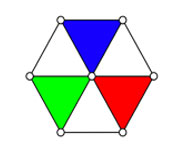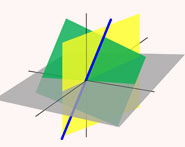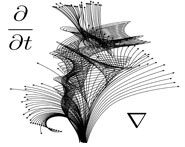


 تاريخ الرياضيات
تاريخ الرياضيات
 الرياضيات في الحضارات المختلفة
الرياضيات في الحضارات المختلفة 
 الرياضيات المتقطعة
الرياضيات المتقطعة
 الجبر
الجبر
 الهندسة
الهندسة 
 المعادلات التفاضلية و التكاملية
المعادلات التفاضلية و التكاملية 
 التحليل
التحليل
 علماء الرياضيات
علماء الرياضيات |
Read More
Date: 20-4-2022
Date: 10-4-2022
Date: 3-4-2022
|
The mathematical study of combinatorial objects in which a certain degree of order must occur as the scale of the object becomes large. Ramsey theory is named after Frank Plumpton Ramsey, who did seminal work in this area before his untimely death at age 26 in 1930. The theory was subsequently developed extensively by Erdős.
The classical problem in Ramsey theory is the party problem, which asks the minimum number of guests 





A typical result in Ramsey theory states that if some mathematical object is partitioned into finitely many parts, then one of the parts must contain a subobject of an interesting kind. For example, it is known that if 






Burr, S. A. "Generalized Ramsey Theory for Graphs--A Survey." In Graphs and Combinatorics (Ed. R. A. Bari and F. Harary). New York: Springer-Verlag, pp. 52-75, 1974.
Erdős, P. and Szekeres, G. "On Some Extremum Problems in Elementary Geometry." Ann. Univ. Sci. Budapest Eőtvős Soc. Math. 3-4, 53-62, 1961.
Graham, R. L. and Nešetril, J. "Ramsey Theory in the Work of Paul Erdős." In The Mathematics of Paul Erdős (Ed. R. L. Graham and J. Nešetril). Heidelberg, Germany: Springer-Verlag, 1996.
Hoffman, P. The Man Who Loved Only Numbers: The Story of Paul Erdős and the Search for Mathematical Truth. New York: Hyperion, pp. 51-57, 1998.



|
|
|
|
دخلت غرفة فنسيت ماذا تريد من داخلها.. خبير يفسر الحالة
|
|
|
|
|
|
|
ثورة طبية.. ابتكار أصغر جهاز لتنظيم ضربات القلب في العالم
|
|
|
|
|
|
|
قسم بين الحرمين ينشر لافتات الحزن والعزاء في ذكرى فاجعة هدم قبور أئمة البقيع (عليهم السلام)
|
|
|